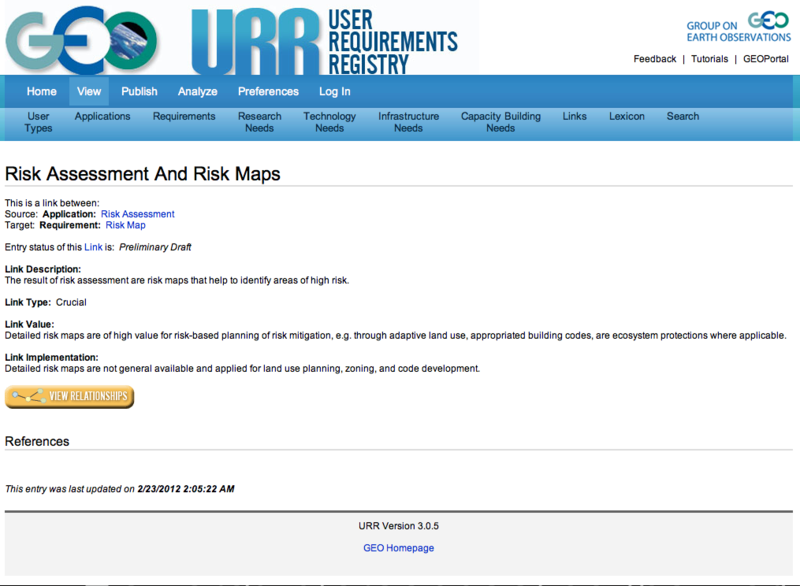
|

|

Tutorial Home | Site Map | Glossary | GEOSS URR | GEO |
|
| Data Model: Overview Relations Links Other Relations Semantics | Previous Next |

|
The Links concept of the URR The entries in the Links relation connect a source entry and a target entry in two different relations or in the same relation. This concept is a novel and rather powerful way of capturing interconnectivity. The URR link concept is different from the standard links provided in the context of a relational database. There, links are defined between two relations using the attributes (columns of the relation in tabular format). For example, the second attribute (column) of one relation could be linked to the third attribute (column) in a second relation. To be more specific, company addresses collected in one relation could be linked to persons collected in another relation through the company identification. However, no specific information pertaining to the link between a specific person and a specific company can easily be captured with this concept. Considering the relations as tables, the URR link concept links a specific row in one relation to a specific row in the same or another table. A link between entry A and entry B can be described through a number of attributes, including link value and link implementation status. The Links relation by itself is a relation, which is not linked as a relation to any of the other relations. The links in the URR are directional, that is, one of the entries is the source, and the other the target of the link. The directionality of the links can be used, for example, to link an application (source) to a requirement (target), indicating that the application produces the required information as an output, or to link a requirement to an application, indicating that the application depends on the required information. The example shown links a source application (risk assessment) to a target requirement (risk map), indicating that risk maps are the output of risk assessments. An application can be linked to an user type showing that the user type benefits from the application. Normally, we try to capture user types that are benefiting from the information produced by an application and they should be the target of a link with an application or a requirements as the source. |